
BLOCK 5
LOT : 64
ROW : 4
COLUMN : 21
SUB. R/C : ?
GRAVE # ?
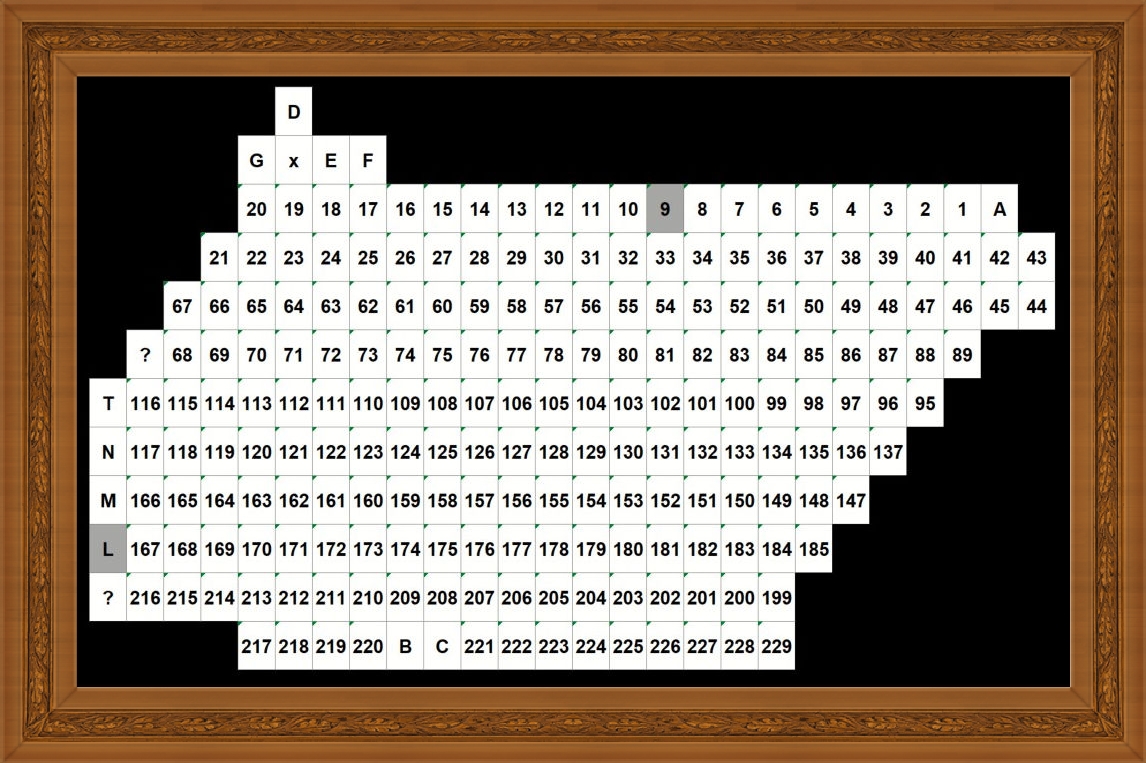
|
James R. "Jimmy" Renshaw
b. November 21, 1794
Rowan County, North Carolina
d. January 17, 1860
Decatur, Macon County, Illinois
buried: January 1860

|

FATHER
William Renshaw
(1769-1816)

MOTHER
Nancy Leach
(1772-?)

MARRIED
Sarah Ann "Sally" Phipps
(1801-1878)
September 16, 1819
Carmi, White County, Illinois
|

CHILDREN
with Sally
|
|
Renshaw Meaning and Origin
English: habitational name from Renishaw in Derbyshire, named from the Middle English personal name Reynold + shawe 'copse'. The name is still found chiefly in Derbyshire, South Yorkshire, and Lancashire. This is a locational name from a now "lost" medieval hamlet which at various times was recorded as Ravenshaw or even Rainshaw, the dialectal "link" with the modern surname spelling. This hamlet was a township within the parish of Prestbury in East Cheshire, although it seems to have disappeared before the 17th Century. The origination is from the Olde English pre 7th Century "Raven", a personal name of considerable popularity, plus the suffix "shaw", a wood. After the death of her husband in 1816, Nancy (nee-Leach) Renshaw took her family to White County, Illinois, where many of her neighbors were settling. In 1828 James and Sarah moved to Shelby county, Illinois, where James' brother John had settled. On January 19, 1829 Shelby county was divided and Macon county was formed. The act of the legislature creating Macon county also provided for the seat of justice therein. JOHN FLEMING, JESSE RHODES and ERSTON WHITTON were named commissioners to locate the county seat. They met April 10, 1829, at the home of James Ward, and carefully and impartially, viewed and examined the situation and convenience, likewise the advantages of the present and future population. In June of 1829, the county commissioners ordered Benjamin R. Austin (county surveyor) to lay off the county seat. Benjamin and his brother William surveyed in Section 15, Township 16 north, Range 2 east, in the northeast quarter. It was plotted as a 20 acre settlement, an area bounded by the prairie (Prairie Street), woods (Wood Street), a pond (Water Street) and Church Street (location of several churches).
Decatur is born.
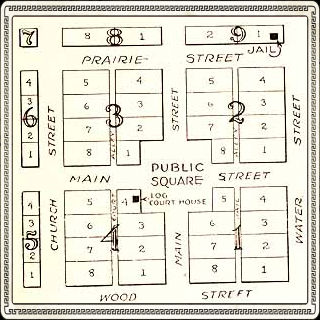
|
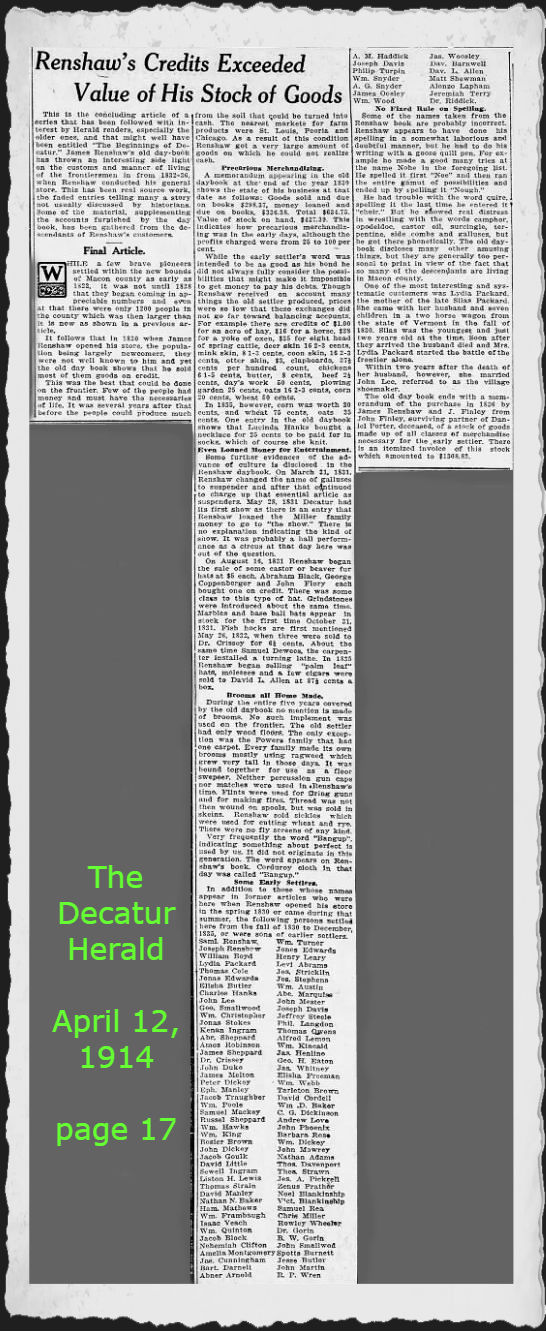
The first house, a two-story log structure, in the limits of the original Decatur was built by Reuben Miller, who sold it to James Renshaw. This was on Lot 3 of Block 3, now the Lincoln Theater entrance on North Main Street. James Renshaw became influential in the development of Decatur, Illinois. He became Decatur's first business man. In October 1829, he started operating a tavern/store/hotel out of his home. James was a hospitable man, and soon made his hotel the center of village life. His tavern license, issued in the county court, cost $4.00. Rates were fixed by the County Commissioners Court and were:
Lodging and supper 62 1/2 cents
Dinner and horse feed 37 1/2 cents
Brandy, rum, gin, wine and cordial 25 cents a half-pint
Whiskey or cider brandy 12 1/2 cents a half-pint
In connection with the tavern "Uncle Jimmy" (as he was affectionately called) operated the first post office in Decatur and also a general store, the first center of trade for that area. He also acquired the first water powered sawmill built on Stevens Creek by William King in 1824. It was known as King's Mill until it was purchased by "Uncle Jimmy" when it became known as Renshaw's Mill. Other merchandise carried by Renshaw's store besides groceries, drugs, and liquor included blacksmith anvil, bellows, and steel. Since there was little cash; many transactions were nothing more than an exchange of home produced supplies. The account book shows credit for tallow, corn, making a pair of pantaloons, corn fodder, and turnips. Renshaw's prized daybook covered the years 1830-1835 inclusive. They show sales of about $10.00 a day for the first month, and by 1837 they had grown to $500 a month. The first entry was December 10, 1829. Nowhere in the book is there mention of a sale of a broom and apparently there were none in those days: bundles of ragweed are said to have been used for sweeping.
James prospered and invested most of his profits in land. In 1834, James Renshaw donated a lot, covered with hazel bushes, on the east side of Church street between Main & Prairie so the Methodist's could build a church. It was not completed until 1839. The church was built as a typical frontier building, thirty feet by forty feet, and twenty-two feet high. Two sides were weather-boarded with rough hewn walnut and two sides of oak clapboards. The walks were plastered and the floor was made of one-foot wide rough boards. The seats were walnut benches placed in two rows, one on the southside for women and the other on the northside for men. The pulpit at the eastend was on a raised platform with a railing around it. There were three benches on each side and one behind the pulpit.
On October 8, 1834 he purchased and laid out an addition to the northeast part of the town and for several years he farmed there. Later, after Decatur grew, this location would be better known as the northeast corner of East Condit and Broadway (M.L.K.). He lived in a log cabin until 1859 when he built a brick home. While digging a new well he sustained some injuries. He died the next January having not fully recovering from those injuries.
The estate he left consisted of more than 1000 acres.The Decatur Herald - (Decatur, Illinois) - 15 MAR 1914 * page 15
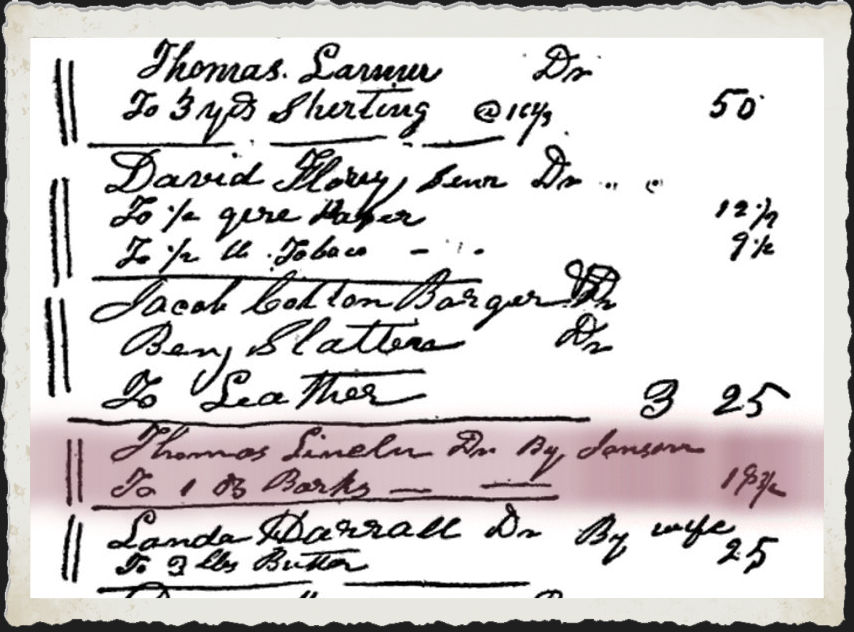
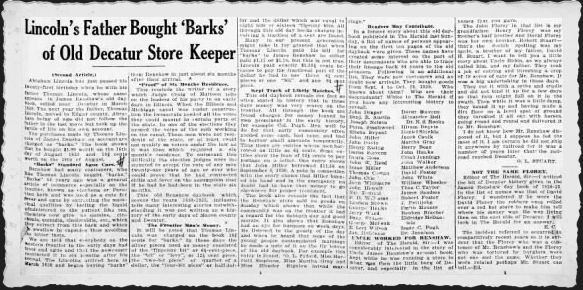
LINCOLN CONNECTION
James Renshaw's account book, still preserved by members of his family gives many clues to pioneer life in the 1830's. One of the first entries in the book shows credit given to William Hanks for 104 pounds of fresh killed pork for which he was allowed 1 1/2 cents a pound. Credit was given at 18 cents a pound for 55 pounds of deerskins. Many visited the store buying whiskey and rum which they charged to their accounts. Thomas Lincoln, father of Abraham Lincoln, was a good customer for the 'barks' during the summer of 1830. This bark was cinchona or Peruvian bark and was used as a cure for fever or ague, a disease that was manifested in what the pioneers called the 'shakes' and which attacked nearly all newcomers to the western frontier. The bark was boiled and the liquid administered as tea. Extract from the bark was later used as quinine - in capsule to avoid the bitter taste. Renshaw's drug store records show that Lincoln was charged $1.00 for one-fourth of a pound of bark, the purchase having been made by son. Carl Sandburg in his "Abraham Lincoln, The Prairie Years" mentions the Renshaw store and Peruvian bark: Fall came, with miasma from the prairie, and the chills, fever, ague, for Tom Lincoln and Sally Bush, and many doses of 'barks' a Peruvian bark and whiskey tonic mixture, bought at Renshaw's general store in Decatur.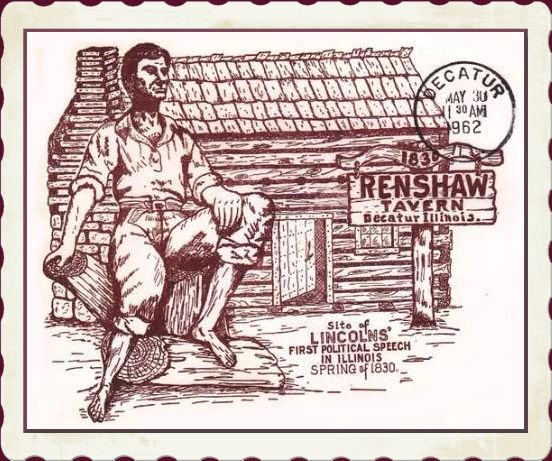
A favorite story tells of Abe Lincoln having made his first speech in front of Renshaw's store. Carl Sandburg in his book, "Abraham Lincoln, Wilderness Beginnings" makes the following statement: It was a change from the monotony of hard farm work in the summer of 1830 for Abraham to make his first political speech in Illinois. He had been delivering speeches to trees, stumps, rows of corn and potatoes just practicing by himself. But when two legislative candidates spoke in front of Renshaw's store in Decatur, Abraham stepped up and advocated improvement of the Sangamon River for better navigation.
William Renshaw, son of James, eight years of age, talked with Abe, listened to his tall tales and surely saw him splitting rails. It is told that Abe cut logs for the Renshaw mill.
|
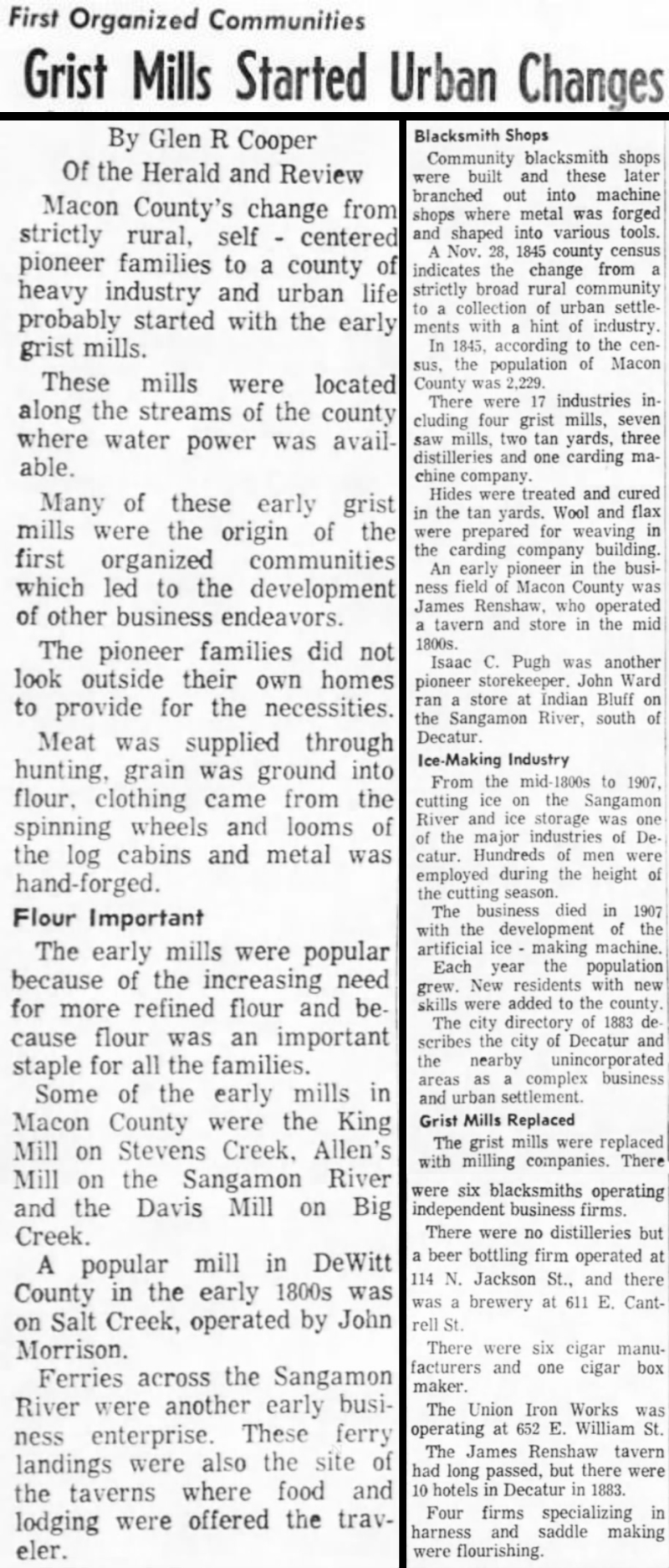
The Decatur Daily Review
(Decatur, Illinois)
21 JAN 1968 * page 9
|
OTHER NOTES
ON
JAMES RENSHAW
1834-1835
James Renshaw served as
school commissioner
and superintendent,
of Macon county.
1837-1838
James Renshaw was on the
Board of Trustees for
the town of Decatur.
January 16, 1837
Macon county commissioners
ordered CHARLES EMERSON,
RICHARD OGLESBY and
JAMES RENSHAW to contract
for a new courthouse.
{ A note about James Renshaw's log cabin.
On February 11, 1862, William Smith and
Sarah Elizabeth "Lizzie" Kinkade Coleman
were married by the bride's foster father,
Rev. John W. Coleman. They bought the old
James Renshaw log house, moved it to
Morgan and Division streets, and built a
house from the lumber. That was the
first house in that neighborhood. }
There was a Renshaw school on east Mound
road near Greenswitch road in Macon county.
Now that area is part of Hickory Point
township, Decatur, Macon county. Assumed
it was named for James Renshaw or his son,
John. Do not know when it opened. It is
referred to in the Decatur papers in May 1895.
It was closed around October 1958.
|
|
|
|
|
|
|